Stir-frying lean meat such as pork, chicken, or beef without it clinging to the pan is a common challenge for home cooks. Achieving perfectly seared, tender meat with a caramelized exterior requires more than just luck—it demands precision, the right tools, and an understanding of culinary science. This comprehensive guide will explore the techniques, ingredients, and equipment needed to master this skill, ensuring your lean meat stays intact and flavorful during cooking.

The Importance of Preheating Your Pan
The foundation of non-stick stir-frying lies in proper pan preheating. A cold or underheated pan will cause meat proteins to bond with the metal surface, leading to sticking. To avoid this:
- Use a Heavy-Bottomed Pan: Woks or cast-iron skillets excel at retaining heat. Their thickness ensures even temperature distribution, reducing hot spots that can scorch meat.
- Heat the Pan Dry: Before adding oil, heat the pan over medium-high to high heat for 2–3 minutes. A drop of water should evaporate instantly when flicked onto the surface, indicating it’s hot enough.
- The “Water Test”: If water sizzles and beads dance across the pan, it’s ready. This stage, known as the Leidenfrost effect, creates a steam barrier that prevents food from sticking.
Oil Selection and Application
Oil acts as a lubricant between the meat and the pan. However, not all oils are created equal:
- High Smoke-Point Oils: Opt for peanut, grapeseed, or avocado oil. These withstand high temperatures without smoking or breaking down, which is critical for searing.
- The “Slicking” Technique: After preheating, add a thin layer of oil (1–2 tablespoons) and swirl it to coat the pan. Avoid overcrowding the pan with oil, as excess can cause splattering and uneven cooking.
- Hot Oil, Cold Meat: Add the meat only when the oil shimmers but hasn’t begun to smoke. This ensures the meat sears instantly, forming a protective crust.
The Role of Marination
Marinating lean meat isn’t just about flavor—it’s a defensive strategy against sticking. Key components include:
- Acidic Ingredients: Lemon juice, vinegar, or pineapple juice tenderize meat by breaking down tough fibers. However, limit acidic marinades to 15–30 minutes to prevent the meat from becoming mushy.
- Starch Coatings: Cornstarch or potato starch creates a slippery barrier. Toss meat in a teaspoon of starch per 8 ounces of protein before cooking.
- Baking Soda (Optional): A pinch of baking soda raises the meat’s pH, helping it retain moisture. Rinse thoroughly after 15 minutes to avoid a soapy taste.
Cutting Techniques for Even Cooking
The way you slice meat influences both texture and sticking:
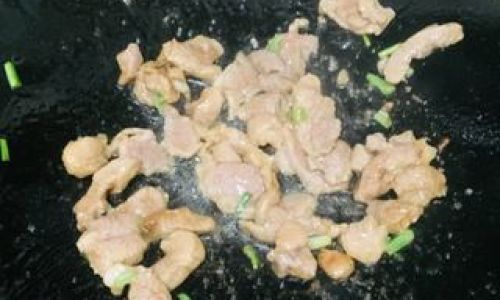
- Against the Grain: Identify the meat’s muscle fibers and slice perpendicular to them. This shortens the fibers, reducing toughness and ensuring tenderness.
- Uniform Thickness: Aim for 1/8- to 1/4-inch thick slices. Thicker cuts take longer to cook, increasing the risk of overcooking and sticking.
- Partial Freezing: For ultra-thin slices, freeze meat for 20–30 minutes before cutting. This firms it up, making precision easier.
The Art of Stir-Frying: Timing and Motion
Stir-frying is a dynamic process that requires constant movement:
- Add Meat in Batches: Overcrowding the pan drops the temperature, causing meat to steam instead of sear. Cook in batches if necessary, reserving cooked meat on a plate while you work.
- Use the Right Utensil: A long-handled wooden or metal spatula with a thin edge is ideal for scraping the pan’s surface without damaging it.
- The “Toss and Flip” Method: Instead of stirring, lift and flip the meat to promote even browning. This motion mimics professional woks, which rely on tossing for rapid heat distribution.
Managing Moisture Content
Excess moisture is the enemy of non-stick cooking. Here’s how to combat it:
- Pat Meat Dry: After marinating, use paper towels to remove surface liquid. Wet meat will steam and stick.
- Avoid High-Sodium Marinades: Salt draws moisture to the surface. If using soy sauce or salt, add it toward the end of marinating.
- Ventilation: Use a splatter screen or open a window to reduce steam buildup, which can soften the meat’s crust.
Advanced Techniques for Problematic Meats
Certain meats pose unique challenges:
- Chicken Breast: Extremely lean and prone to drying. Brine in saltwater (1 tablespoon salt per cup water) for 20 minutes before cooking.
- Turkey: Blend with a teaspoon of oil per pound to add fat content.
- Extra-Lean Beef: Velvet the meat by marinating in a mixture of cornstarch, oil, and a protein like egg white. This creates a silken coating.
Troubleshooting Common Mistakes
Even seasoned cooks encounter hiccups. Here’s how to fix them:
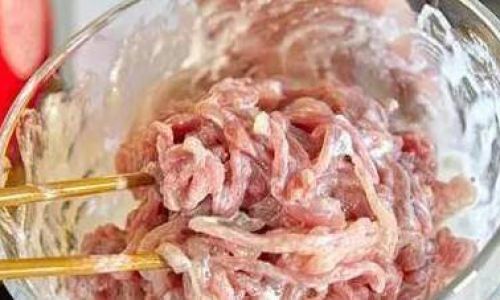
- Sticking Occurs: Lower the heat slightly and add a splash of oil. Use the spatula to gently scrape the meat free.
- Overcooked Edges: Reduce cooking time by 1–2 minutes. Lean meat cooks rapidly; remove it from the pan while still slightly pink, as residual heat will finish cooking.
- Burnt Flavor: Wipe the pan clean with a paper towel and start fresh. Burnt oil or meat particles will impart bitterness.
Equipment Maintenance for Long-Term Success
A well-seasoned pan is a non-stick pan:
- Cast-Iron Care: After cooking, wipe the pan with a dry paper towel (never soap). Re-season with a thin layer of oil while still warm.
- Non-Stick Pans: Avoid abrasive sponges. Use wooden utensils to prevent scratching the coating.
- Wok Seasoning: For carbon-steel woks, heat until smoking, then rub with oil using a paper towel. Repeat after each use to build a patina.
Pairing Lean Meat with Vegetables and Sauces
Once you’ve mastered non-stick meat cooking, elevate the dish with complementary ingredients:
- Quick-Cooking Vegetables: Bell peppers, snap peas, and mushrooms should be stir-fried separately and added at the end to retain crispness.
- Sauce Timing: Add liquids like soy sauce or oyster sauce after the meat is cooked. Too early, and the sauce will boil the meat instead of caramelizing it.
- Garnishes: Fresh herbs (cilantro, basil), toasted sesame seeds, or a drizzle of sesame oil add complexity without moisture.
Alternative Cooking Methods for Failure Prevention
If all else fails, these backup plans save dinner:
- Par-Cooking: Briefly blanch meat in boiling water before stir-frying. This partially cooks it, reducing pan time.
- Baking: Toss meat in oil and bake on a wire rack at 400°F (200°C) for 8–10 minutes. Finish in a hot pan for color.
- Sous-Vide: Cook meat in a water bath at 135°F (57°C) for 1–2 hours, then sear. Guarantees edge-to-edge doneness.
The Science Behind Sticking: A Deeper Dive
Understanding the chemistry can refine your technique:
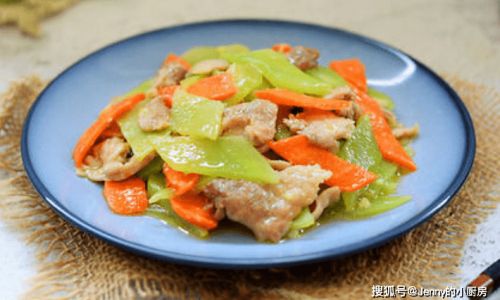
- Protein Denaturation: When meat hits a hot pan, its proteins unfold and bond with the pan’s surface. A rapid sear (“Maillard reaction”) creates a crust before adhesion occurs.
- Oil Viscosity: Thicker oils (like coconut) form a stronger barrier but require higher heat. Thinner oils (canola) spread faster but may evaporate quicker.
- Leidenfrost Effect Revisited: At 320°F (160°C), water droplets levitate on a vapor cushion. Achieving this temperature ensures meat floats, preventing sticking.
Cultural Variations in Stir-Frying
Different cuisines approach non-stick cooking uniquely:
- Chinese Stir-Fry (Chao): Emphasizes high heat and rapid movement. Woks are designed to concentrate heat at the bottom.
- Japanese Sukiyaki: Meat is cooked in a shallow pan with soy sauce and sugar, relying on a sweet glaze to prevent sticking.
- Thai Pad Prik: Chili paste and basil are added late, requiring the pan to be deglazed with stock to lift stuck-on bits.
Sustainability and Health Considerations
Modern cooks often balance flavor with nutrition:
- Low-Fat Cooking: Use broth or wine instead of oil to deglaze the pan. A non-stick pan reduces the need for excessive fat.
- Organic Meats: Lean cuts from grass-fed animals have less marbling but require shorter cooking times to avoid toughness.
- Plant-Based Alternatives: Tofu or tempeh can be stir-fried using the same techniques. Press excess moisture first.
Conclusion: Practice Makes Perfect
Mastering non-stick stir-frying is a journey, not a destination. Experiment with different meats, oils, and pans to discover what works best for your kitchen. Remember:
- Patience is key—rushing leads to mistakes.
- Taste as you go; seasoning adjustments can rescue overcooked meat.
- Clean your pan immediately after use to prevent residue buildup.
By combining scientific precision with culinary intuition, you’ll transform lean meat from a sticky nightmare into a restaurant-worthy centerpiece. Whether you’re whipping up a quick weeknight dinner or impressing guests, these techniques ensure your meat stays golden, tender, and gloriously unstuck.
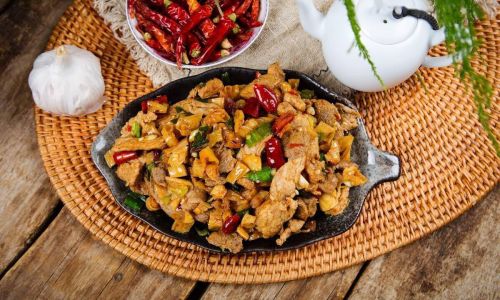
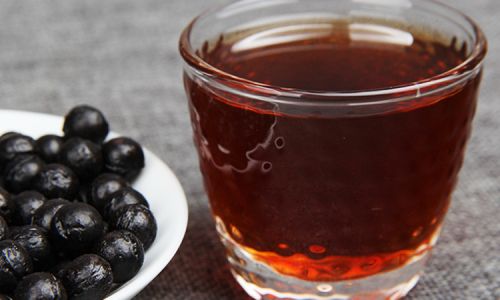
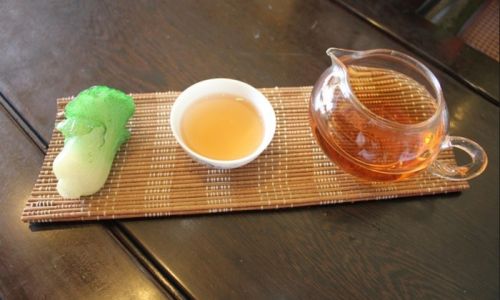
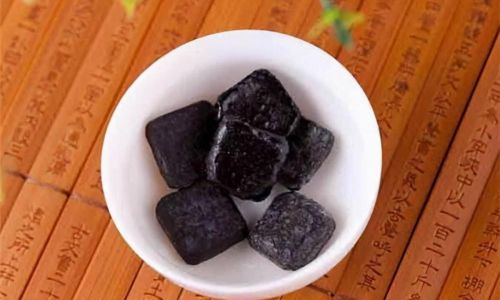


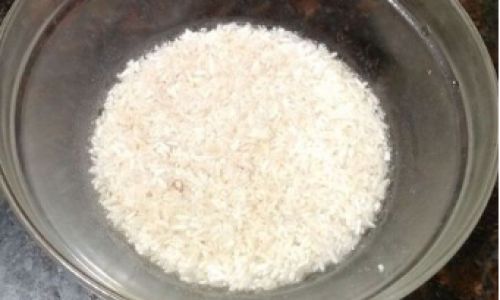
0 comments